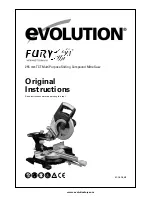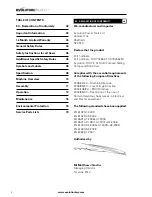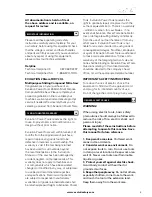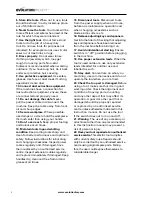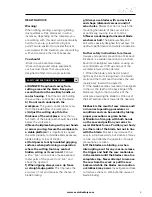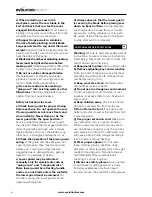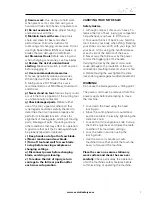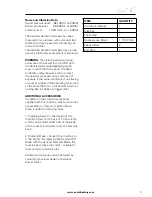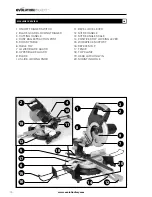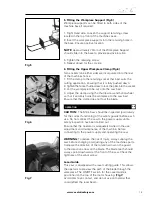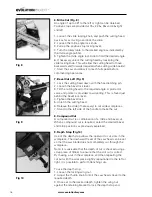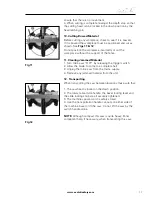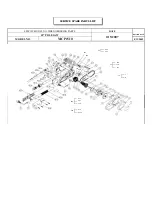
4
www.evolutionfury.com
5. Store idle tools. When not in use, tools
should be stored in a dry locked-up place,
out of children’s reach.
6. Never force the tools. Your tools will be
more efficient and safer when used at the
rate for which they were intended.
7. Use the right tool. Do not force small
tools to do the job of a heavy duty
tool. Do not use tools for purposes not
intended; for example do not use circular
saws to cut tree limbs or logs.
8. Dress properly. Do not wear loose
clothing or jewellery which may get
caught in moving parts. Non-skid
footwear is recommended when working
outdoors. If you have long hair, tie it back
and wear protective hair covering.
9. Use protective equipment. Use safety
glasses. Use face or dust mask if cutting
operations create dust.
10. Connect dust extraction equipment.
If the machines have a connection for
dust extraction equipment, ensure these
are connected and properly used.
11. Do not damage the cable. Never
pull the power cable to disconnect the
machine. Keep the cable away from heat,
oil and sharp edges.
12. Secure workpiece. Where possible,
use clamps or a vice to hold the workpiece.
It’s much safer than using your hands.
13. Don’t over reach. Keep proper footing
and balance at all times.
14. Maintain tools in good working
condition. Keep cutting tools sharp and
clean for better performance and optimum
safety. Follow instructions for lubricating
and changing accessories. Inspect power
cables regularly and, if damaged, have
them replaced by an authorised service
centre. Inspect extension cables regularly
and replace immediately if damaged. Keep
handles dry, clean and free from oil and
grease at all times.
15. Disconnect tools. Disconnect tools
from the power supply when not in use,
before any maintenance operation and
when changing accessories such as
blades, bits, cutters, etc.
16. Remove adjusting keys and spanners.
Get into the habit of checking that adjusting
keys and spanners have been removed
from the machine before turning it on.
17. Avoid unintentional starting. Ensure
switch is in “off” position before plugging
in the machine.
18. Use proper extension leads. When the
tool is used outdoors, use only extension
leads intended for outdoor use and
labelled as such.
19. Stay alert. Concentrate on what you
are doing, use common sense and do not
operate the tool when you are tired.
20. Check that no part is damaged. Before
using a tool, make sure that it is in good
working order. Check the alignment and
condition of moving parts, mounting
and any other aspect that may affect its
operation. A guard or other part that is
damaged should be properly repaired
or replaced by an authorised service
centre unless otherwise indicated in this
instruction manual. Do not use the tool
if the switch does not turn on and off.
21. Warning. The use of any accessory or
attachment other than one recommended
in this instruction manual may present a
risk of personal injury.
22. Have your tool repaired at an authorised
service centre. This electric tool complies
with current safety rules. Repairs should
only be carried out by an authorised service
centre using original spare parts. Failing
this, the user could expose themselves to
considerable danger.
®

